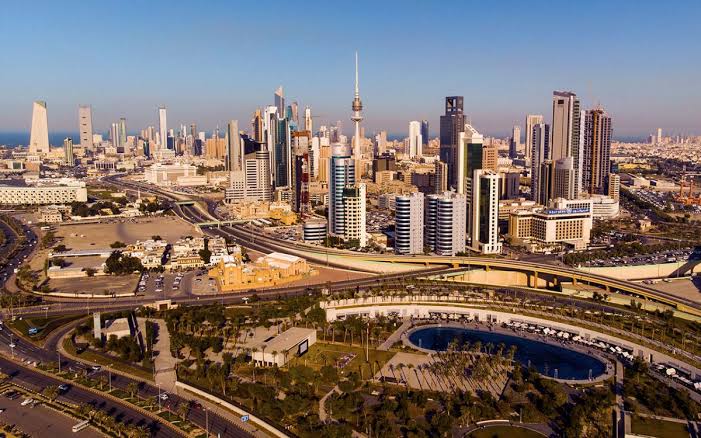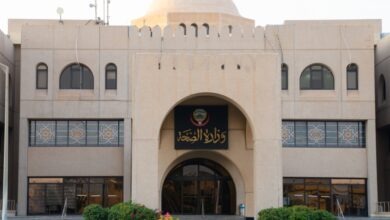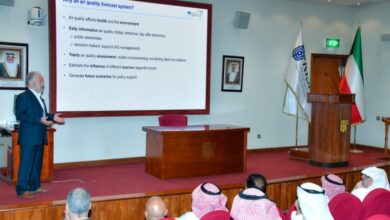Labor cities as a comprehensive solution to multiple problems

• A plan to establish six labor cities with complete service, recreational, security, and health facilities to accommodate 220,000 workers is ready. The labor cities will be located in various governorates across the country.
• The project aims to address the shortage of labor housing, improve the living standards of low-income workers, and reduce traffic congestion.
• The first labor city project has been announced in South Jahra with a capacity of 20,000 workers.
The Al-Mangaf fire, a tragedy that claimed the lives of several workers, has reignited discussions on labor cities. This topic, though debated for years, has gained renewed urgency.
Proponents of labor cities emphasize their potential to address critical issues. They argue that relocating bachelors from residential areas will eliminate overcrowding and improve living conditions.
Additionally, labor cities could provide essential services and amenities for workers, enhancing their overall well-being.
The stalled project
Despite the acknowledged need, the project for establishing labor cities remains in the planning stages.
Roughly three years ago, the Ministry of Public Works collaborated with relevant authorities to define the technical specifications and necessary requirements. However, progress has stalled, leaving the project unimplemented.
The urgency for labor cities has been highlighted on multiple occasions. During the COVID-19 pandemic, the regional lockdown exposed the vulnerability of businesses with workforces residing in isolated areas.
While the idea of labor cities resurfaced during this crisis, it receded with the decline of COVID-19 cases. Perhaps, the Al-Mangaf fire serves as a stark reminder of the need to prioritize this initiative.
A proven solution awaits implementation
A well-defined plan for establishing six such cities, complete with essential services, recreational facilities, and security and healthcare infrastructure, has existed for years.
This comprehensive solution offers a promising path towards eliminating overcrowded bachelor housing and improving living conditions for expatriates. However, this plan remains unrealized, leaving a crucial step unaddressed.
The recurring need for labor cities, coupled with their successful implementation in neighboring countries like Qatar and the Emirates, underscores their value.
These cities have demonstrably achieved their intended purpose by providing a well-rounded living environment for workers. The Al-Mangaf fire serves as a tragic reminder of the consequences of inaction.
It is time to move beyond discussions and prioritize the construction of these much-needed labor cities.
Six labor cities
The government has designated six sites for labor cities across various governorates, working collaboratively with relevant government agencies. Here’s a breakdown of the proposed locations:
- Sabhan City: This site encompasses 246.5 hectares and has the capacity to accommodate 40,000 workers.
- North of Al-Muta’ala: Spreading over 246.5 hectares, this location can house 40,000 workers.
- South of Jahra: Located on Al-Salmi Road, this 101.5-hectare site is planned for 20,000 workers.
- Sulaibikhat Kbad: This 246.5-hectare area is designated for 40,000 workers.
- East of Arifjan City: Situated in Ahmadi Governorate, this 246.5-hectare site can accommodate 40,000 workers.
- North of Khairan, Al-Wafrah: Encompassing 246.5 hectares, this location is planned to house 40,000 workers.
Design and amenities
Each site will be divided into smaller plots with a maximum capacity of 5,000 residents. The design will prioritize efficient movement with dedicated road networks for vehicles, pedestrians, and buses.
Additionally, a ring road will be built around each site to ensure smooth movement for security and emergency vehicles.
The project emphasizes creating a positive living environment by incorporating green spaces and afforestation throughout the cities. The aim is to have at least 12% of the area dedicated to greenery.
Each labor city will be equipped with open playgrounds and service centers strategically distributed across the plots to cater to residents’ daily needs.
The commercial area will be limited to ensure a focus on essential services, with a maximum commercial exploitation rate of 1.65 square meters per person.
The plans include establishing various facilities within the labor cities, including:
- Places of worship with Quran memorization centers
- Clinics
- Security services centers
- Fire stations
- Vocational schools
- Gas stations and maintenance services
- Fenced perimeters with security gates
- Tree belts
- Exchange companies
- Bank branches
- Bakeries
- Mills
- A central market
- Sports and health centers
- Restaurants and cafes
- Multi-purpose halls
- Parking spaces for visitors, service buses, and waiting areas for public transportation
Each plot will cover an area of 100 hectares and will have a population density of 400 to 500 people. The total expected number of residential units at each site is approximately 4,500.
Kuwait announces first labor city project in South Jahra
The Kuwait Municipality has announced the first labor city project will be situated in the South Jahra area and encompass a vast area of 1,015,000 square meters.
The labor city project will be developed through a public-private partnership (PPP) investment model.
The labor city will cater to the holistic needs of its residents. It will feature residential complexes capable of accommodating up to 20,000 bachelor workers from various nationalities.
These complexes will be complemented by a range of essential commercial services, including shops, grocery stores, a bank, and exchange offices.
Recognizing the importance of social well-being, the project will also incorporate amenities such as a mosque, playgrounds, and a medical clinic.
The project will include the development of critical infrastructure, providing residents with access to reliable communications networks, electricity, and a clean water supply.
The construction of roads will facilitate easy movement within the city, while essential services like civil defense and firefighting will ensure the safety and security of residents.
Objective of labour cities: Addressing housing needs of migrant workers
The concept of labor cities in Kuwait has emerged as a critical response to a growing need. With a rising number of expatriate workers with limited income employed across various government departments, the demand for suitable and affordable housing has become increasingly pressing.
This initiative aims to tackle several challenges simultaneously. Firstly, it seeks to address the significant shortage of adequate housing options specifically catering to low-income workers.
Secondly, the project envisions improving the overall living standards of these workers. Labor cities have the potential to offer not just housing, but also essential amenities and community facilities that can enhance their quality of life.
Thirdly, the relocation of labor housing away from established residential areas presents a strategic advantage. This can significantly reduce traffic congestion currently experienced in these areas.
Finally, the development of labor cities presents an opportunity to improve government services. By concentrating a significant population of workers in designated areas, authorities can potentially streamline the delivery of essential services such as waste collection, sanitation, and public transportation. This can lead to a more efficient and cost-effective system for all involved.













